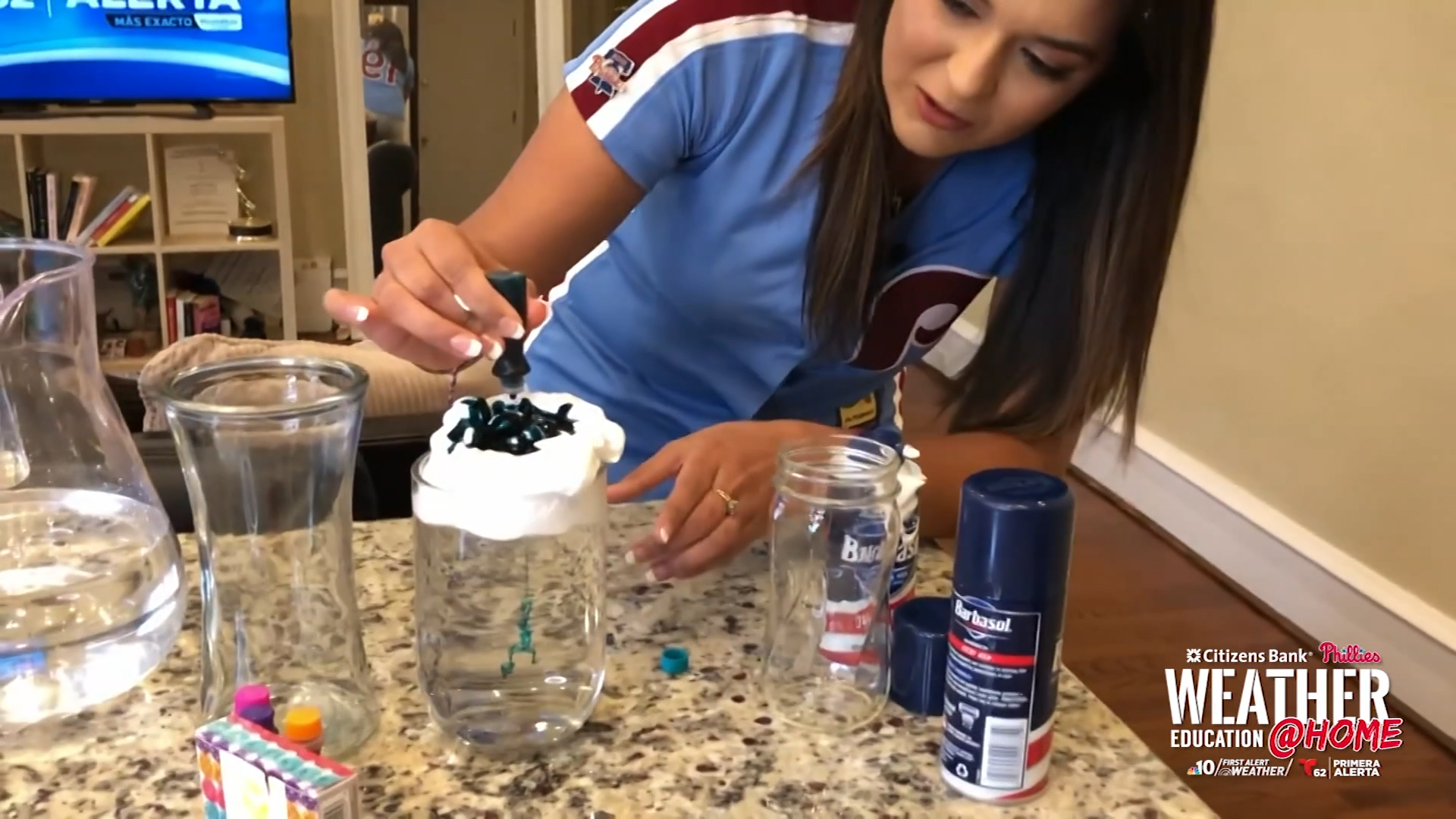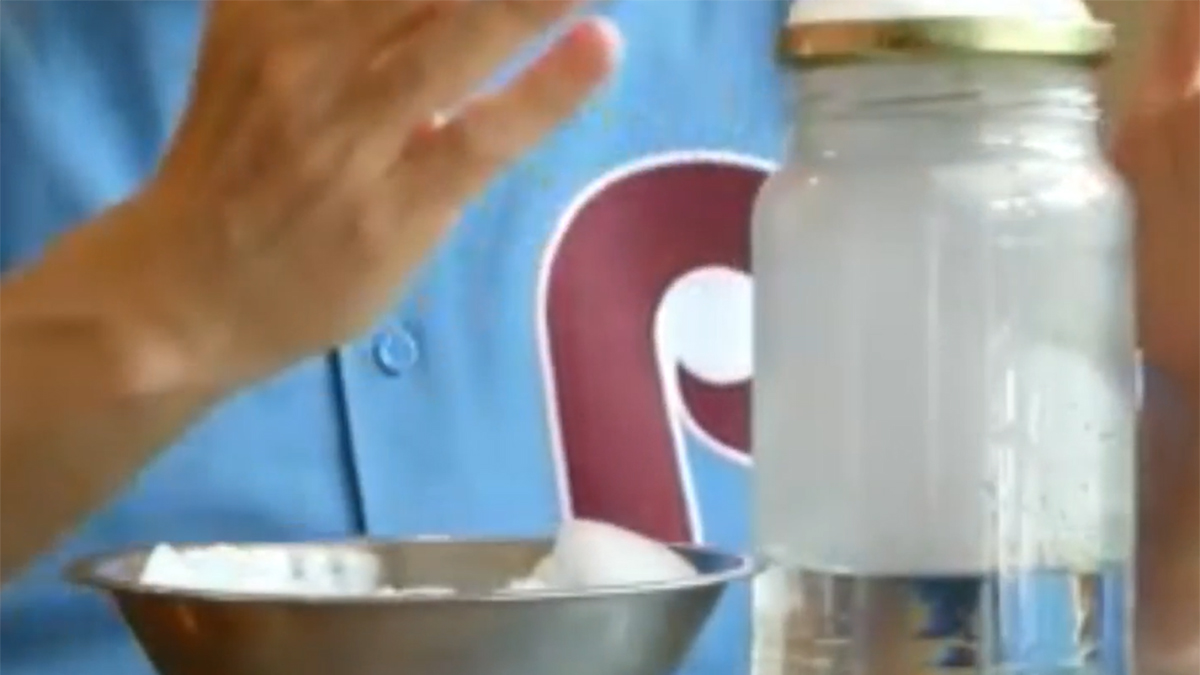Welcome to Weather Education Week @ Home! All week we are bringing parents and students interesting science experiments from the NBC10 First Alert Weather team -- and the Philadelphia Phillies!
For more on Weather Education Week @ Home, click here. For a printable version of this experiment, click here.
For this experiment, let's check out the difference between the density of warm water or air and colder water or air. And check out the appearance by former Phillies closer Brad Lidge!
If you try this experiment, please take a video and upload it here -- we may use it on NBC10!
Get Philly local news, weather forecasts, sports and entertainment stories to your inbox. Sign up for NBC Philadelphia newsletters.
Need:
- 2 same size, clear glasses or jars
- Hot water
- Cold water
- 1 spoon
- 1 plastic card
- blue and red food coloring
- 1 tin or dish (optional)
Steps:
- Fill your two glasses all the way to the top. One with the hot water, one with the cold water.
- Transfer both glasses to the tin or dish (this is your spill zone).
- Add blue dye to the cold glass. Stir.
- Add red dye to the hot glass. Stir.
- Cover the top of the blue, cold glass with the plastic card. It should suction onto the glass, but if it doesn’t or you spill some water, that’s ok.
- Holding onto the card on the glass top, flip the blue, cold glass upside down.
- Set it atop the red, warm glass, and make sure it perfectly aligns.
- Slowly, pull the plastic card, acting as a separator, out. It may be easiest to have second person do this, while the first keeps the glasses steady. Again, if you spill water, it’s OK!
- Watch what happens to the water -- take notes on the colors. It should begin to turn both glasses purple.
- Clean out your glasses.
- Repeat steps 1-9, except now cover the warm, red glass with the plastic card and flip it atop the blue, cold glass.
- Notice the difference in the colors! The red stays on top, the blue on bottom.
What Happened?
You just tested the density of different temperatures of water! The first time, the cold, blue water sank into the red, warm water. We saw purple water through both glasses. This is because the cold water was more dense than the warm. The second time, the warm, red water stayed floating atop the blue, cold water. This is because the warm water was less dense than the cold. The colors didn’t mix!
The same rules apply to air densities. Cold air is more dense than warm air. So, when a cold front approaches a town, the cold air will quickly force the warm air upwards. When there’s enough moisture with an air mass, this can trigger cloudy, rainy and even stormy conditions. This happens relatively quickly, as the cold front passes. Think of the cold air as a wedge, lifting the warmer air that was in place over the town. The opposite, a warm front, brings different conditions. When a warm front approaches an area, the warm air will slowly pile up on top of the cold air before it can finally mix and move over a town. When there’s enough moisture, this can sometimes cause cloudy, showery or even foggy conditions. Typically, this change and the impacts are longer lasting.



